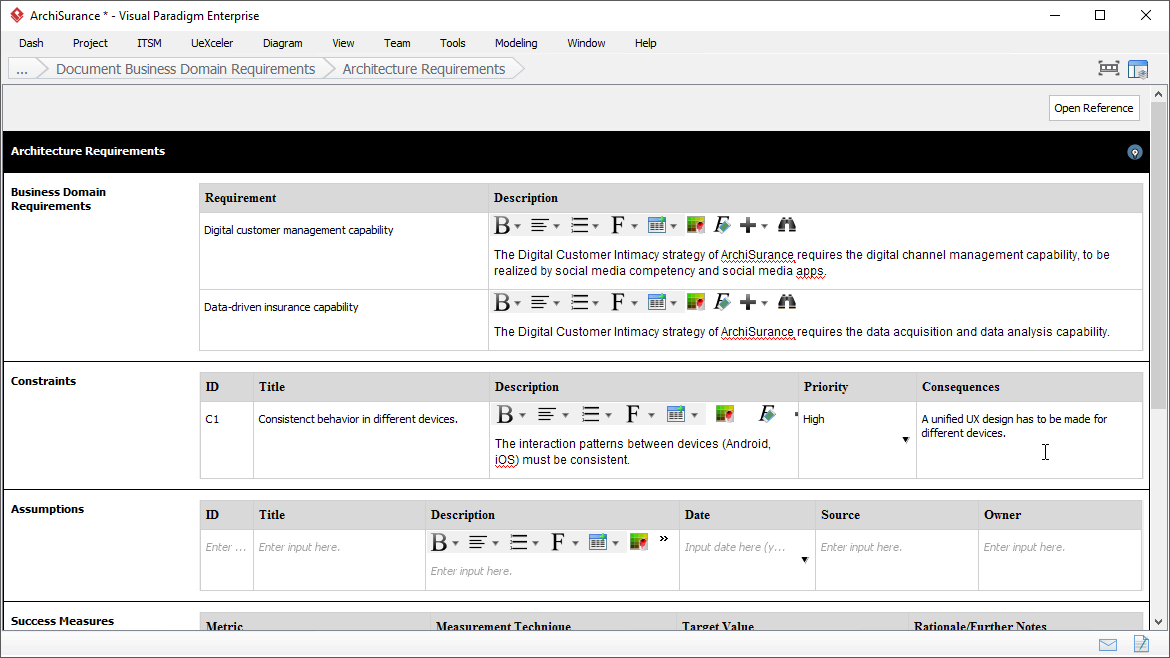Architecture Requirements Specification is one of the TOGAF deliverables you can create with the TOGAF tool.
The Architecture Requirements Specification provides a set of quantitative statements that outline what an implementation project must do in order to comply with the architecture. An Architecture Requirements Specification will typically form a major component of an implementation contract or contract for more detailed Architecture Definition.
As mentioned above, the Architecture Requirements Specification is a companion to the Architecture Definition Document, with a complementary objective:
- The Architecture Definition Document provides a qualitative view of the solution and aims to communicate the intent of the architect.
- The Architecture Requirements Specification provides a quantitative view of the solution, stating measurable criteria that must be met during the implementation of the architecture.
Step 1: Consolidate Architecture Requirements
Review and consolidate the architecture requirements
Consolidate and revise the Architecture Requirements identified in phase B, C and D.

Based on the result of implementation factor assessment and gaps consolidation, assess the requirements, gaps, solutions, and factors to identify a minimal set of requirements whose integration into work packages would lead to a more efficient and effective implementation of the Target Architecture across the business functions that are participating in the architecture. This functional perspective leads to the satisfaction of multiple requirements through the provision of shared solutions and services. The implications of this consolidation of requirements with respect to architectural components can be significant with respect to the provision of resources. For example, several requirements raised by several lines of business can be resolved through the provision of a shared set of Business Services and Information System Services within a work package or project.
Document the IT service management requirements, if any
Document the requirements of management activities to be performed to plan, design, deliver, operate and control the IT services.
Step 2: Consolidate and Reconcile Interoperability Requirements
Document the interoperability requirements
Consolidate and document the interoperability requirements identified in previous phases.
Describe the measures to take in order to clear or minimize the conflicts implementing the target architectures (business, information systems, technology). The interoperability requirements should be consolidated based on the Architecture Vision, target architectures, as well as the implementation factor assessment, deduction matrix and consolidated gaps.
Step 3: Confirm Implementation Guidelines, Specifications and Standards
Consolidate the implementation guidelines, specifications and standards
Confirm the guidelines, specifications and standards one has to follow in order to implement the architecture. Here are three pieces of information you should provide:
- Implementation Guidelines: Best practices, rules and principles, which are required to follow.
- Implementation Specifications: A documented specification that lists out the items, which must be followed and fulfilled.
- Implementation Standards: The standards agreed upon within the industry.